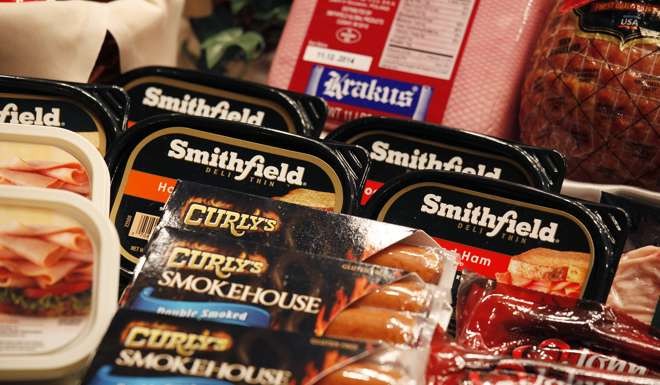
Chinese pork giant WH Group may eye major acquisitions by end of 2017
The company, which aims to become the world’s biggest packaged meat producer, may look for suitable targets once its debt falls to manageable levels
WH Group will set its sights on a new round of sizeable acquisitions by the end of next year as it aims to become the world’s largest packaged meat company.
“We are already the largest pork packaged meat producer in the world, and we aim to become the leader in other meat markets,” said Luis Chein, director of WH Group.
“We will consider bigger scale acquisitions when our debt level drops further.”
Chein said the company’s debts will have dropped to a more comfortable level by the end of 2017.
Its net debt to equity will fall to 21.8 per cent in 2017 and 8.1 per cent in 2018, according to an estimate by Credit Suisse. That compares to 61.4 per cent in 2014.
We are already the largest pork packaged meat producer in the world, and we aim to become the leader in other meat markets
WH Group made a name for itself in the global market when it announced a US$4.7 billion acquisition of the largest pork producer in the US, Smithfield Foods, in 2013.
“When we acquired Smithfield in 2013, our debt rose to US$7.6 billion, and our interest-bearing debt to equity ratio was 237 per cent, ” said Chein.
By the end of this year, the company’s total interest-bearing debts will be down to US$3 billion, and will have dropped further by the end of 2017, thanks to strong cash flow of about US$1.5 billion to US$2 billion per year, according to Chein.
WH Group, formerly called Shuanghui International, listed in Hong Kong in 2014.
Its core business is the packaged meats segment that focuses on producing and selling both low temperature and high temperature meat products.
“Most of our profit comes from packaged meats, we should be considered as a consumer stock instead of the biggest hog producer,’ said Chein .
The company is also involved in the slaughtering business, as well as fresh and frozen meat .

Chein said: “We had been criticised about how a Chinese company could manage a US company. Three years on from the acquisition, it has been proven that we have created a synergy from the merger.
“The US office has followed our management style and co-operates well.” Chein said that WH Group has not sent staff from Hong Kong or China to run the company.
China hog prices rose 31 per cent in the first nine months, resulting in high raw material costs which affected the profit margin of packaged meat under its mainland division, Shuanghui Development.
But hog prices in the US fell because of a glut of supply glut. Chein said Smithfield exported pork to Shuanghui to lower its raw material cost.
Shuanghui Development is the biggest pork and packaged meat producer in the country and the Shuanghui brand is a household name in China. The company had 18.9 per cent market share of the packaged meat segment by revenue in 2015, according to ratings agency Fitch.
Chein said Shuanghui will continue to enjoy the price spread between the two countries through imports, and Smithfield has seen business improve in the wake of expansion in the mainland market.
In its October report, Fitch said: “WH Group’s China and US businesses as complementary to each other.”
Smithfield started exporting a small amount of fresh pork to China in 2013 after it was acquired by WH Group. Pricing has been favourable for Smithfield and the move has also helped to reduce excess supply in the US, Fitch said.
In addition, some parts of the pig, such as the innards, have little value in the US but are commonly consumed in China. The China and US pork markets have different supply-demand dynamics, so the geographical diversification also helps to reduce earnings volatility on a consolidated basis.
Shuanghui Development saw a 3 per cent decline in earnings before interest and tax and 2 per cent recurrent net profit growth in the third quarter of 2016, on the back of weaker-than-expected packaged meat sales volume and high raw material costs.
Smithfield posted a 63 per cent year-on-year rise in ebit and a 73 per cent year-on-year net profit expansion.
Looking ahead, Chein said the company would plan to lower Smithfield’s financing costs while Smithfield continues to increase import of its pork and packaged meats into China.
Pork and its related products tend to enjoy stable demand with limited sensitivity to economic cycles, Chein said.

